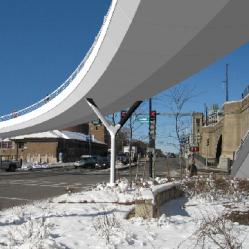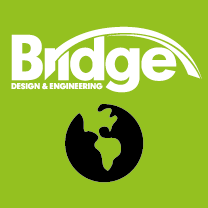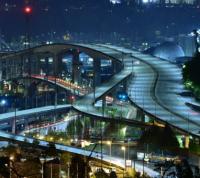Students from Eindhoven University of Technology in the Netherlands have begun work this week to build a 65m-long ice bridge to a design by Leonardo da Vinci.
The first batch of students have gone to Finland to build the paper fibre reinforced bridge, which will have a free span of 35m. It is believed to be the longest ice bridge ever built. The paper fibre that remains after the ice has melted in the spring will be used as compost.
The bridge is based upon a design by Leonardo da Vinci for a bridge over the Bosporus that was never built.
The international project is being led by a team from the Dutch university. The 5m-wide bridge is due to be completed by 13 February. To demonstrate that it is strong enough for pedestrians to cross safely, it will carry a 2t car.
The ‘Bridge in Ice’ is the third ‘ice project’ in Finland by students and staff of the built environment department of Eindhoven University of Technology. In 2014 a team from Eindhoven built the world’s largest ice dome (30m across) in just three weeks, and they only just made it in time due to the unusually warm weather in Finland that year.
The latest project requires twice as much ice – around 900t in total – and the team expects to need twice as much building time. The students will be working in severe conditions in shifts day and night for seven weeks.
The bridge will be made with water to which 2% paper fibre is added. The students spray this water in thin layers onto an inflated balloon that serves as a mould and it freezes almost instantly. Once the structure is strong enough, the balloon is removed from under it.
Calculations revealed that the previous aim of a 50m free span was not feasible because more ice would be needed than the team can produce.
The bridge will be the main attraction of an ice festival taking place in Juuka, and it is expected, just like past ice projects, to attract thousands of visitors.
In total around 150 students and volunteers will be making the trip to Juuka to build the bridge. They will come not just from the Netherlands but also from Belgium, England, Scotland, Portugal, Switzerland and Finland. The project leader is Arno Pronk, researcher at Eindhoven University of Technology, who will be assisted by co-leaders Masters students Roel Koekkoek and Thijs van de Nieuwenhof. Ten other educational institutions and 45 companies are are also working on the project.




